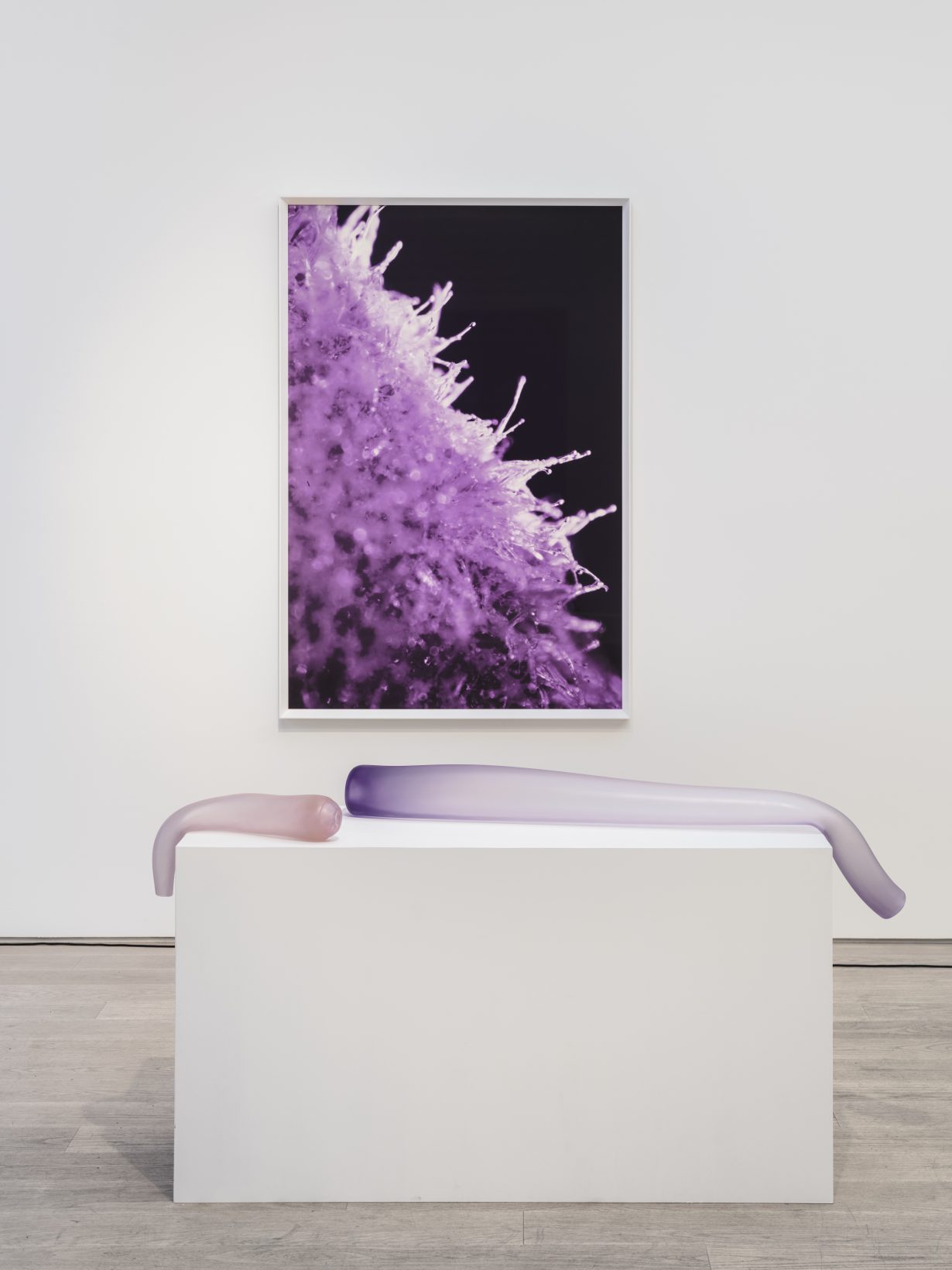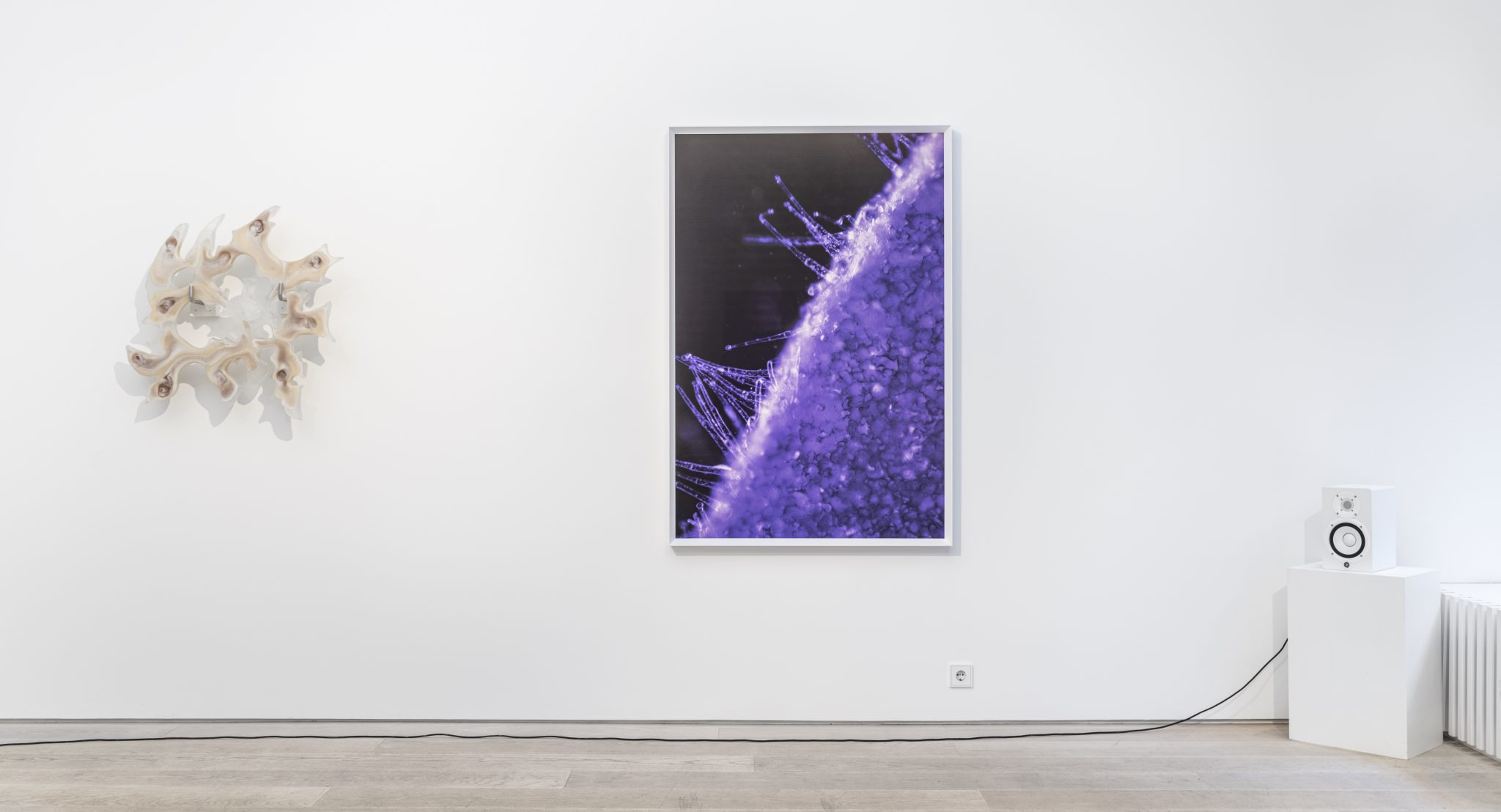A Tale of Symbiogenesis at Andréhn-Schiptjenko, Stockholm explores the hybridisation of art and biotechnology
A genetically modified tobacco plant is the protagonist of Dana-Fiona Armour’s latest show. During a residency at the Paris-based biopharmaceutical company Cellectis in 2021–22, the young French artist inoculated the plant, Nicotiana benthamiana, which is normally used as a host in experimental virology, with a human gene responsible for skin colour. Documenting this speculative and ethically challenging process through a variety of modalities – photography, video, sound, glass objects – Armour seeks to explore the hybridisation of art and biotechnology through the concept of symbiogenesis (a merger of two separate organisms into one).

Three large glossy prints, Vue Microscopique Numéro 4–6 (Nicotiana Benthamiana Transgénique) (all works 2022), dominate the gallery space, visualising microscopic views of the plant’s surface during stages of genetic transformation. In the centre of the room, the video Scan Micro CT Nicotiana Benthamiana – Pre Transgenesis ACT II is shown on loop, taking the viewer through a simple 3D rendering of the plant’s venous system. The play on life-science storytelling is evident and sets the overall tone; one almost expects an overlaid corporate logo. Any irony embedded in these works is so subtle as to be unintentional. Contrarily, and seemingly accidentally, Armour lays bare the naive positivism inherent in collaborations between art and biotech: it rarely reaches beyond the illusion of visionary thinking. Behind the intricate, conceptual framework lies a simple dynamic: the plant’s main purpose, in this show, is to inspire the creation of objects.

Yet the emphasis on form has some compensations elsewhere, as Armour’s glass pieces are imbued with restrained ecstasy and ambiguous sensuality. The triptych Nervures Secondaires 1–3 consists of three large works cast in crystal, opaline and coloured glass: their pointy, fossil-like shapes also emanate from the veins of the plant. Transcending the pseudoscientific agenda of Armour’s project, these works hover on the wall like prehistoric ghosts, oscillating between organic otherness and sophisticated ghoulishness. Another set of glass works, Pneumatophore #2–4, is based on the rhizome of the plant and has been shaped as if to dramatise primitive affects – these elongated forms variously slump despondently or rise up hopefully – or mimic human limbs. These mouth-blown pieces also engage, but they ultimately fail to transgress the merely representational, a symptom of the exhibition’s general inconclusiveness. Unfortunately, here, Armour’s style of speculation too often results in a dead end.
A Tale of Symbiogenesis at Andréhn-Schiptjenko, Stockholm, through 4 March
